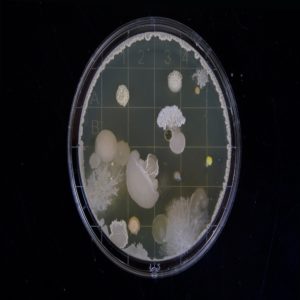Intro to Algae
Algae form the primary link in the food chain. This means that our existence and that of all ocean and land animals depends on algae. Furthermore, with the abundance of many species of algae all over the globe, algae become part of our eco-system, and play an important role in global warming or its reversal. Algae can be divided into prokaryotes and eukaryotes. Each group exhibits enormous ecological, genotypic, and metabolic diversity with over 4000 distinct species of cyanobacteria (prokaryotes) and a similar number of unicellular algae (eukaryotes) classified so far. Algae can also be divided into macroalgae and microalgae. Macroalgae includes multicellular seaweed, whereas microalgae are microscopic. Microalgae proliferate under the right conditions in an unparalleled manner, so are considered to be the right candidate for a future food.

Commercially-Grown Microalgae
Microalgae are cultivated commercially for human nutritional products in several dozen small to medium-scale production systems around the world, producing a few tens to several hundred tons of biomass annually. Total world commercial micro-algal biomass production is estimated at about 10,000 tons per year. The main microalgae species cultivated photosynthetically for nutritional products are Spirulina, Chlorella, Dunaliella and Haematococcus. Microalgae are also grown for live aquaculture feeds in hundreds of systems around the world. Finally, microalgae nutritional products are also produced commercially by dark fermentation.